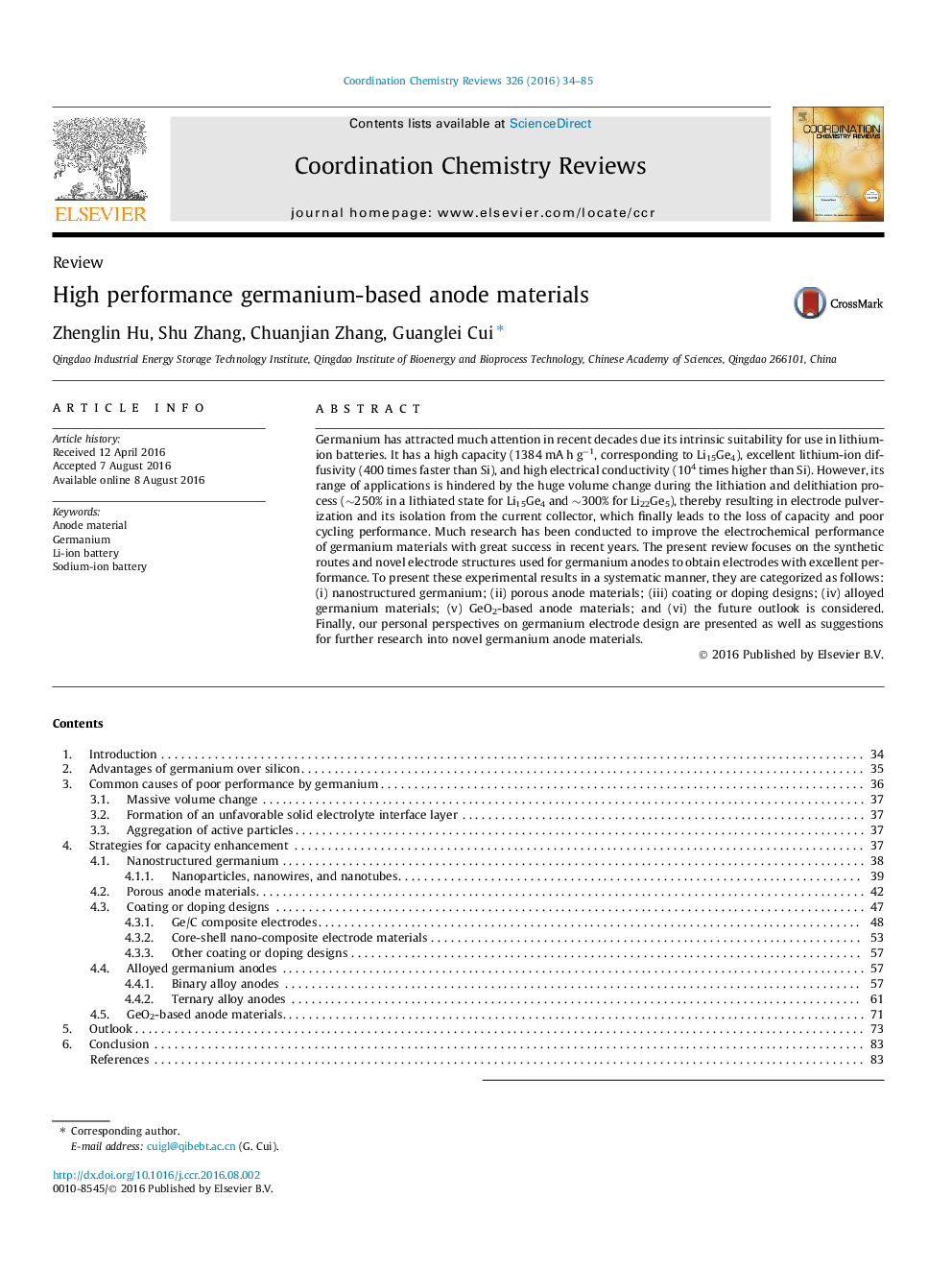| Article ID | Journal | Published Year | Pages | File Type |
|---|---|---|---|---|
| 1299025 | Coordination Chemistry Reviews | 2016 | 52 Pages |
•The advantages and disadvantages of bare germanium anodes are proposed.•Various strategies of capacity enhancement in Li ion batteries have been presented.•The application of modified germanium-based anodes in sodium ion batteries have also been introduced.•Conclusion section gives some personal perspective about the development of germanium-based anodes in the future.
Germanium has attracted much attention in recent decades due its intrinsic suitability for use in lithium-ion batteries. It has a high capacity (1384 mA h g−1, corresponding to Li15Ge4), excellent lithium-ion diffusivity (400 times faster than Si), and high electrical conductivity (104 times higher than Si). However, its range of applications is hindered by the huge volume change during the lithiation and delithiation process (∼250% in a lithiated state for Li15Ge4 and ∼300% for Li22Ge5), thereby resulting in electrode pulverization and its isolation from the current collector, which finally leads to the loss of capacity and poor cycling performance. Much research has been conducted to improve the electrochemical performance of germanium materials with great success in recent years. The present review focuses on the synthetic routes and novel electrode structures used for germanium anodes to obtain electrodes with excellent performance. To present these experimental results in a systematic manner, they are categorized as follows: (i) nanostructured germanium; (ii) porous anode materials; (iii) coating or doping designs; (iv) alloyed germanium materials; (v) GeO2-based anode materials; and (vi) the future outlook is considered. Finally, our personal perspectives on germanium electrode design are presented as well as suggestions for further research into novel germanium anode materials.
